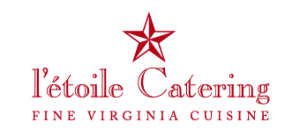Soup and its history
 Food historians tell us the history of soup is probably as old as the history of cooking. The act of combining various ingredients in a large pot to create a nutritious, filling, easily digested, simple to make/serve food was inevitable. This made it the perfect choice for both sedentary and travelling cultures, rich and poor, healthy people and invalids. Soup (and stews, pottages, porridges, gruels, etc.) evolved according to local ingredients and tastes. New England chowder, Spanish gazpacho, Russian borscht, Italian minestrone, French onion, Chinese won ton and Campbell’s tomato…are all variations on the same theme.
Food historians tell us the history of soup is probably as old as the history of cooking. The act of combining various ingredients in a large pot to create a nutritious, filling, easily digested, simple to make/serve food was inevitable. This made it the perfect choice for both sedentary and travelling cultures, rich and poor, healthy people and invalids. Soup (and stews, pottages, porridges, gruels, etc.) evolved according to local ingredients and tastes. New England chowder, Spanish gazpacho, Russian borscht, Italian minestrone, French onion, Chinese won ton and Campbell’s tomato…are all variations on the same theme.
Soups were easily digested and were prescribed for invalids since ancient times. The modern restaurant industry is said to be based on soup. Restoratifs (wheron the word “restaurant” comes) were the first items served in public restaurants in 18th century Paris. Broth [Pot-au-feu], bouillion, and consomme entered here. Classic French cuisine generated many of the soups we know today.
Advancements in science enabled soups to take many forms…portable, canned, dehydrated, microwave-ready. “Pocket soup” was carried by colonial travellers, as it could easily be reconstituted with a little hot water. Canned and dehydrated soups were available in the 19th century. These supplied the military, covered wagon trains, cowboy chuck wagons, and the home pantry. Advances in science also permitted the adjustment of nutrients to fit specific dietary needs (low salt, high fiber, etc.).
“Cereals, roasted to make them digestible and then ground and moistened or diluted with water to make a paste, either thick or thin, did not become gruel or porridge until people had the idea and means of cooking them. They may initially have been cooked by hot stones in receptacles of natural substances, and then in utensils which could go straight over the fire. Soup, in fact, derives from sop or sup, meaning the sliced of bread on which broth was poured. Until bread was invented, the only kind of thick soup was a concoction of grains, or of plants and meat cooked in a pot. Gruel or porridge was thus a basic food, a staple from of nourishment, and long held that place in Western countries, for in practice bread was a luxury eaten only in towns. A thick porridge of some kind is still the staple food of many peoples, and it is not always made of cereals, but may consist of other starch foods: legumes, chestnuts or root vegetables.”
“The etymological idea underlying the word soup is that of soaking. It goes back to an unrecorded post-classical Latin verb suppare soak’, which was borrowed from the same prehistoric German root (sup-) as produced in English sup and supper. From it was derived the noun suppa, which passed into Old French as soupe. This meant both piece of bread soaked in liquid’ and, by extension, broth poured onto bread.’ It was the latter strand of the meaning that entered English in the seventeenth century. Until the arrival of the term soup, such food had been termed broth or pottage. It was customarily served with the meat or vegetable dishes with which it had been made, and (as the dreivation of soup suggest) was poured over sops of bread or toast (the ancestors of modern croutons). But coincident with the introduction of the world soup, it began to be fashionable to serve the liquid broth on its own, and in the early eighteenth century it was assuming its present-day role as a first course.”
“Our modern word “soup” derives from the Old French word sope and soupe. The French word was used in England in the in the form of sop at the end of the Middle Ages and, fortunately, has remained in the English language in its original form and with much its original sense. We say “fortunately” because it is clear that nowadays a “sop” is not a “soup.” The distinction is important. When cooks in the Middle Ages spoke of “soup,” what they and the people for whom they were cooking really understood was a dish comprising primarily a piece of bread or toast soaked in a liquid or over which a liquid had been poured. The bread or toast was an important, even vital, part of this dish. It was a means by which a diner could counsume the liquid efficiently by sopping it up. The bread or toast was, in effect, an alternative to using a spoon…Soups were important in the medieval diet, but the dish that the cook prepared was often a sop that consisted of both nutritious liquid and the means to eat it. The meal at the end of a normal day was always the lighter of the two meals of the day, and the sop appears to have had an important place in it. In fact it was precisely because of the normal inclusion of a sop in this end-of-the-day meal that it became called “souper” or “supper.



Leave a Reply
Want to join the discussion?Feel free to contribute!